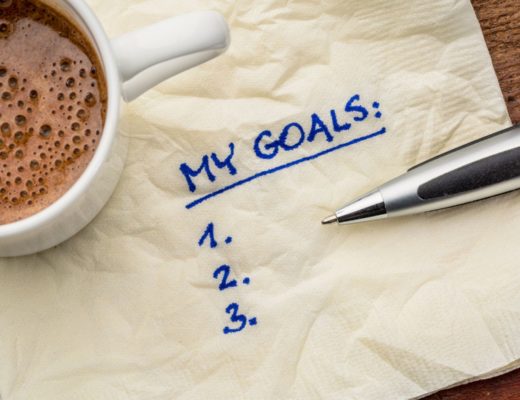As we move through our lives, our experiences have a profound impact on us and work to shape and mold us into the people we are today. Through the highs and lows, we learn valuable lessons and internalize new ways of thinking and believing. As such, every single one of us is imbued with a set of learned beliefs. These beliefs serve as the lens through which we engage with the world around us.
Just as there are beliefs that lift us up and empower us to step into our greatest good, we each have internalized limiting beliefs. These are the “hot thoughts” that stand in the way between you and reaching your fullest potential. These beliefs generally stem from negative experiences and may be a result of someone else saying or doing something harmful and hurtful. They also may be the result of parental modeling – maybe you had a parent (or two) who was stuck in their own limiting beliefs and have passed them onto you.
Learning to identify your limiting beliefs is no easy feat, but it may just be some of the most worthwhile self-work you can do during this lifetime. Shedding these low vibrational patterns and ways of thinking is crucial to anyone looking to align with their highest selves.
Examples of Limiting Beliefs
Have you ever wanted to dive into a new hobby, only to feel pulled back by some unidentifiable feelings of anxiety or inability? These feelings may actually stem from limiting beliefs.
Limiting beliefs can be stealthy if you aren’t sure what to look out for. They can be easily conflated with anxiety, causing many people to avoid these thoughts and their origins altogether. In the case of learning something new, they may take form in the following hot thoughts:
- “I am too old to learn a new skill.”
- “I am not smart enough to try something new.”
- “I will just embarrass myself like last time.”
- “Everyone else is already so much better at this skill than I am, so why bother?”
If you notice, in this string of thoughts, there is one unifier: the belief that someone can’t do what they want to do. As onlookers into this situation, it is easy for us to discredit these beliefs but when you are living them, they can feel all-encompassing.
Where do limiting beliefs come from?
As briefly mentioned above, limiting beliefs come from external cues or reactions to lived experiences. They are not intrinsic – that is, they are generally learned over our lifetime through outside forces.
Though we still develop and grow throughout adulthood, oftentimes limiting beliefs stem from our childhoods. When we are children, our brains are like sponges and we are ultra-receptive to any incoming information. This means our families, friends, teachers, and loved ones take a major role in shaping our entire belief system.
If you are someone who had a tumultuous childhood, experienced abuse or bullying, or had trouble in school, it is likely you are holding onto quite a number of limiting beliefs. On the other hand, even if you had a wonderful childhood, your experiences may have still landed you with negative beliefs just the same. Rest assured, regardless of your upbringing, you have the power and capability to identify these thought patterns and break free from them.
5 Ways to Identify Self Limiting Beliefs
When it comes to the mental hurdles we must overcome, half the battle is recognizing that there is a fight to be had. Automatic assumptions and thought patterns like limiting beliefs make it important to develop the tools to be able to spot them (so we can work on rectifying them later). Here are 5 simple ways you can begin to identify your limiting beliefs:
- Start a daily thought journal.
If you aren’t someone who writes in their journal daily, consider picking up this small habit. Not only will it give you a safe space for expression, but it will also enable you to read through previous entries. Thought journaling is the simple act of writing out your thoughts and feelings to better understand them. As you document and reflect on your days, your feelings, your moods, and your ambitions, you will start to notice themes. These themes are key to uncovering what your limiting beliefs are and where they come from.
This method may take time but it is perhaps the best place to start. Once you train your mind to be more inquisitive about why you are feeling the way you do, you will naturally start to pick up on patterns and cycles.
- Notice where your voice feels hung up.
Have you ever had a difficult conversation with someone only to find that there was a glaring lump in your throat and you were unable to express what you needed to? This inability to speak is a manifestation of your limiting beliefs.
When this happens, consider carefully what was being discussed and with whom. It is recommended to write the details of this situation out so that you may see them from a clearer, more objective perspective. If you notice this lump-in-your-throat sensation around the same people and/or about the same topics, you have identified a pattern worth investigating.
- Write out your biggest life’s fantasies – and why you can’t have them.
The first thing I want to say here is that each and every one of us can have anything we want. This exercise is not meant to show you why you really can’t have your wildest dreams, because you absolutely one million percent can. Instead, this exercise is designed to show you why you believe you can’t have what you want.
This exercise is rather simple. Begin by writing out what it is that you desire – anything that you desire – and then a reason why you can’t have it. For example, if you have always wanted to travel to another country, try something like:
“I can’t travel abroad because _____________.”
It will then be up to you to fill in that blank. Continue with as many of your life’s goals and dreams as you wish, and you may notice a pattern start to develop. Whether your reasons for not doing something are related to fear, money, inadequacy, and so on, this exercise will show you the assumptions and agreements you have made as to why you can’t have the life you want.
- Talk to a friend or loved one about their goals.
This exercise will offer you an opportunity to get out of your own head and into the shoes of another person. Often times, when the people around us are dealing with something, we can offer objective feedback that points to a solution that is clear to us. For the person receiving this feedback, the solution may not be so clear so its good for us to see this in action.
If you have a friend who has always talked about doing something but never has, consider asking them why they haven’t and what they feel is holding them back. As you listen, think about what limiting beliefs they subscribe to that may be getting in the way of them doing something important to them. Offer them helpful feedback and explore what this limiting belief has caused in their lives (if they are willing, of course!).
From this exercise, you should feel more ready to look at your own patterns with the third person, removed perspective. When we can see others more clearly, we can see ourselves in them and are often able to relate to their experiences.
- Work with a professional, trained mental health counselor.
If you have the means, seek out a mindfulness therapist, psychologist, or counselor to explore your limiting beliefs. As you discuss your thoughts and struggles, a counselor should be able to help you identify your harmful thought patterns and the negative assumptions you have made about yourself.
Choosing a counselor can be particularly challenging, but in this case, a trained professional will do wonders. They will be able to see what you sometimes cannot and provide constructive and helpful ways to move through them. Mindfulness professionals have specialized training in the subject and will set you on track to living a more harmonious life – which includes being able to spot limiting beliefs as they come up.
How to Work Through Limiting Beliefs
As mentioned before, identifying limiting beliefs is only half the battle. It is perhaps the most important piece, however, because it can catalyze a dramatic (and needed) shift for you internally, opening you up to the possibility of change and growth.
Working through limiting beliefs is another mountain to climb but just know that when you are working to recognize hot thoughts as they arise, you are on the right track. Mindfulness and meditation tools will serve you well as you continue to explore these thoughts and their origins. Continue putting the work in, and you will find yourself ready to open up to new ways of seeing, thinking, and believing. Embrace these changes and move with the flow, you will be surprised at how much out there is yours for the taking!





No Comments